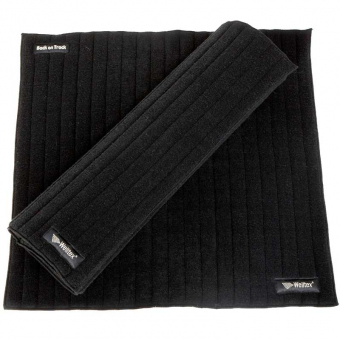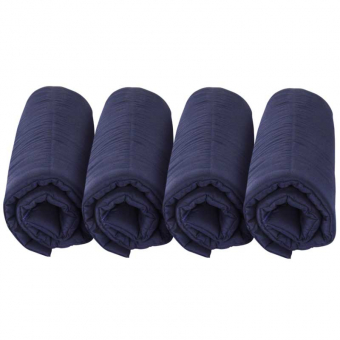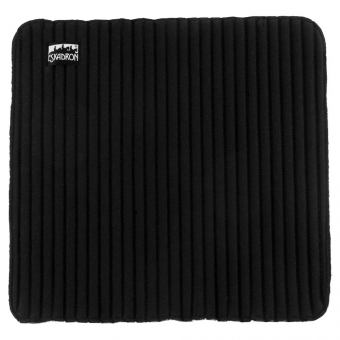The difference between a riding pad and a pad intended for use in the stable and stall is generally quite significant and serves very different purposes. However, a common feature of all leg pads is that they are wrapped around the horse's legs using various types of bandages, with fleece or stable bandages being the most common, the latter having more dirt-repellent properties.
Read more
Leg Pads - Functionality in Motion
Leg pads are a collective term for various types of pads extensively used by riders and horse handlers to properly care for the horse before, during, and after training sessions. A riding pad should provide good support to the leg, and breathability is also crucial to prevent tendons and joints from getting too warm during the session. It's also important that they effectively wick away moisture when in motion since horses often sweat, especially during the summer months. A good leg pad also helps prevent pinching the tendon during wrapping and is preferred by many over combination bandages without a pad, which are more suitable for experienced riders or horse handlers.Bandage Pads & Stall Pads
Stall pads, in most cases, are designed to provide warmth and are often considerably thicker. These also need to be breathable, but it's also important that they reflect the heat from the legs effectively to dilate blood vessels and improve circulation. Stall pads are often used with wraps designed for stalls, which means they are slightly elastic and made of a smoother material to prevent bedding from sticking too easily.The term 'bandage pads' is frequently used when it comes to leg pads, primarily referring to pads used in the stable. Stall pads are more generally for recovery and preventive work, whereas bandage pads can also be used medicinally to support or protect injuries on the horse's legs. However, these terms have somewhat merged today, and even bandage pads can now refer to various types of pads used in the stall.




















